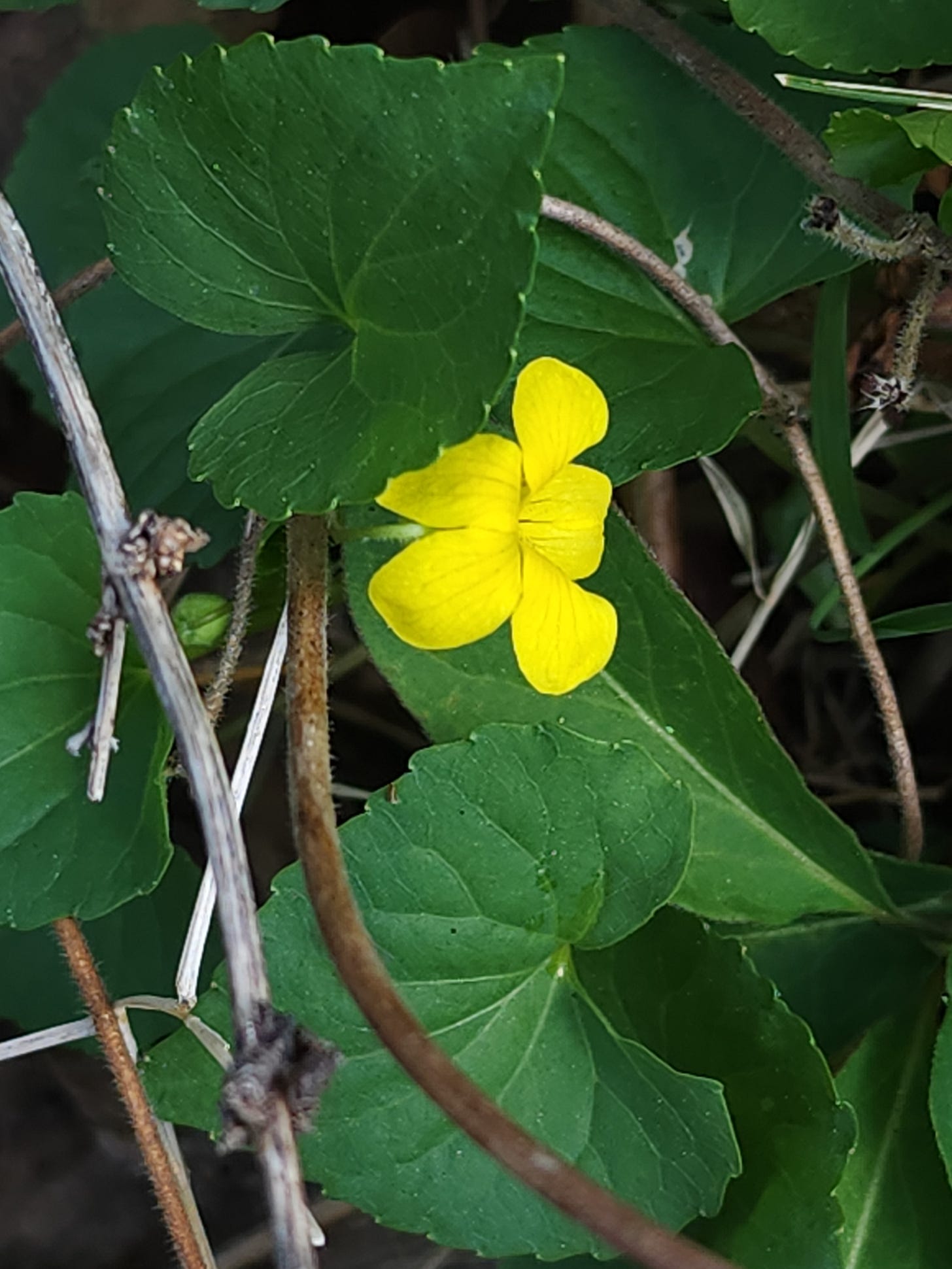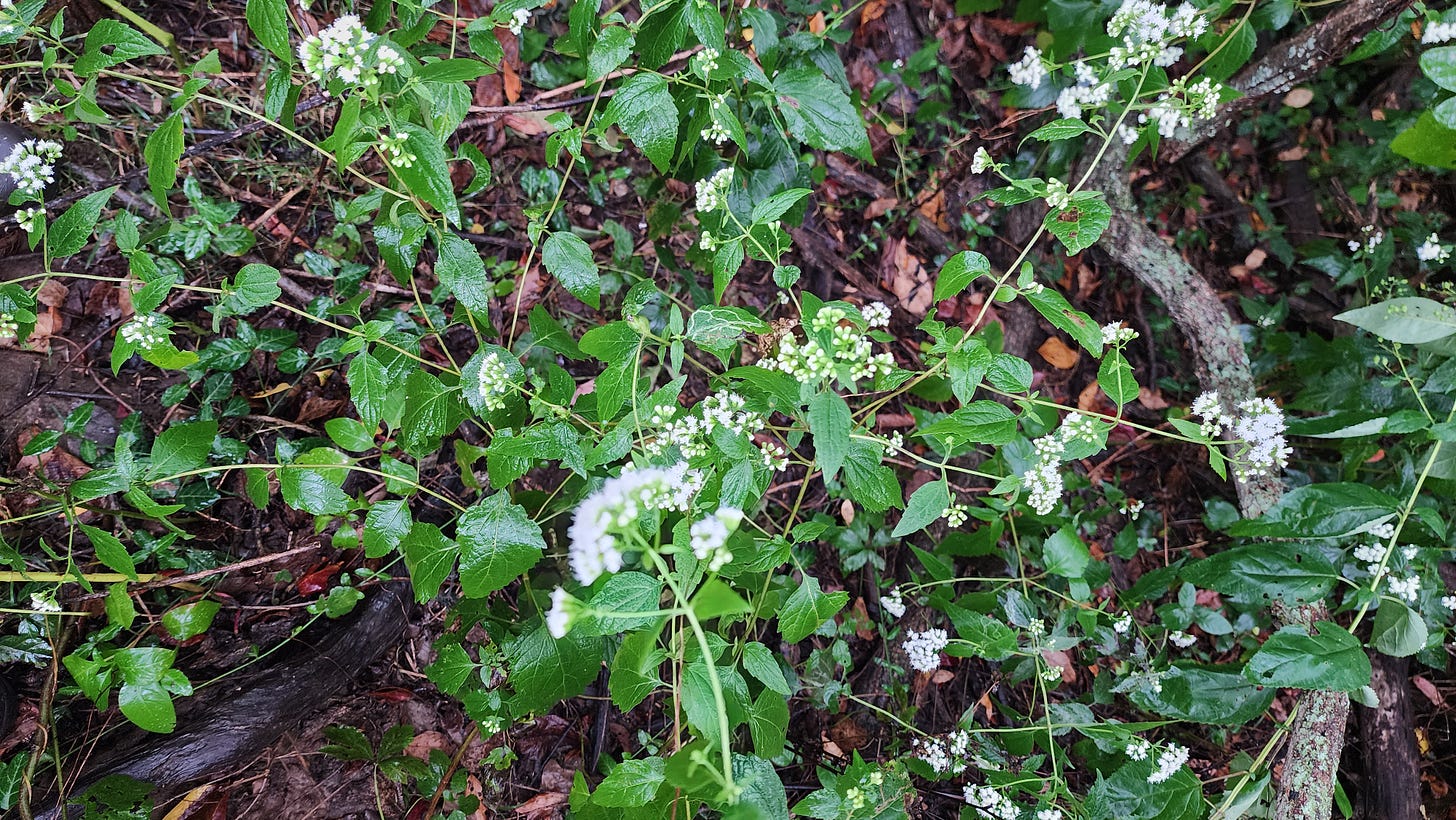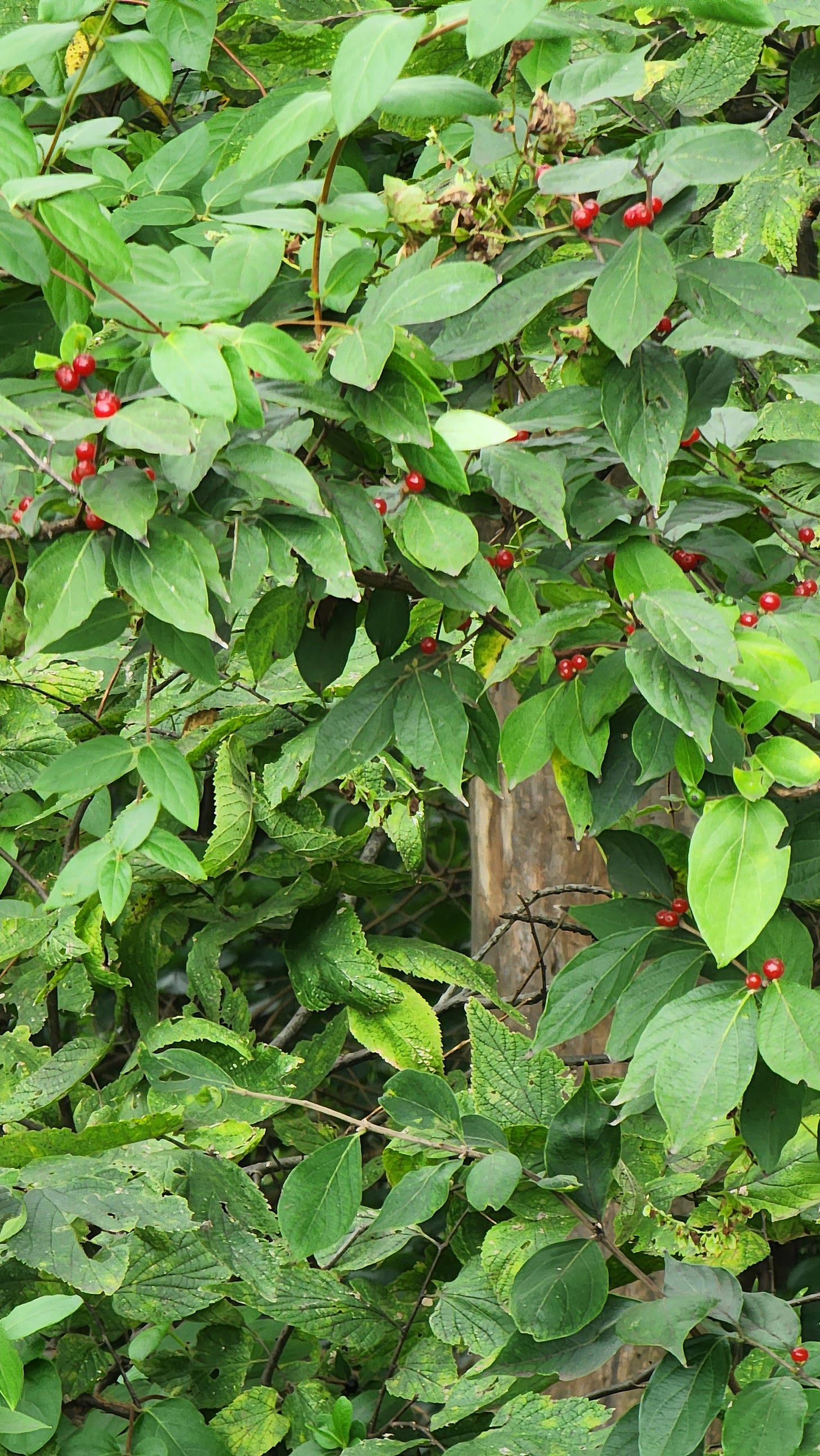March is an unpleasant month at Union Cemetery. The climate is stingy, giving a glorious spring day about once a week, then punishing with wind, rain and abrupt cold the other six. Spring is coming, but don’t you dare put in your garden yet.
The annual March Cemetery Association Board meeting is on the calendar, held indoors at a local family restaurant. The date has changed over the years, the present being 7:00 pm on the third Friday of March. Last year’s meeting was at Lollie’s Cafe where the Friday special is popular; fried blue gill and two sides for $9.00. Lucky patrons will find some red velvet cake left. Cemetery business is discussed, Robert’s rules of order mostly followed and the tradition since 1831 of caring for Union Cemetery extends one more year into the uncertain future.
The Natives
April is different, however. The sunny days muscle out the lingering cold of winter as bird’s-foot violet makes its presence known. Then as predictable as a Shakespearian production, the annual sequence of trees, weeds and flowers make their brief appearance before exit. Birds-foot violets (Viola pedata) are my favorite, seemingly a rare dainty native flower, yet it survives here in spite of two hundred years of human indifference. These violets seem unusually small, conceding to the frequent mowing of the cemetery grounds. Like some humans, they know how to keep their heads down.
Other violets also make their appearance. Near the tree line are common violets (Viola sororia) and once in a while, the rarer yellow version makes an appearance.
One plant in particular (below) had us stumped until we used a plant identification app. Below is Carolina Elephants Foot (Elephantopus carolinianus), normally a tall flowering native plant but in the close mowed cemetery, it takes on a different form with strong waxy leaves, minus the stem. The name notwithstanding, Carolina Elephants Foot has a wide natural range covering the entire southeastern United States including southern Illinois.
If you want to do your own plant identification, I recommend Plant Net. It is easy to use and available both as a website and smart phone app. Click on the link below.
As we move into summer, the Fringe Leaf Wild Petunia shows its flower. The normally robust clump in a mowed lawn leaves it like other native plants, dwarf like, clinging low to the ground, and cheated of its full potential.
In late summer, a killer appears. White Snakeroot (Ageratina altissima) contains the tremetol toxin. During the early nineteenth century thousands of pioneers to the American Midwest died from this cause, most notably Nancy Hanks Lincoln, Abraham’s mother.1 Not until about 1830 did pioneers learn the secret from an Indian woman. Early pioneers were drinking milk from cows that had eaten the plant, thus transferring the toxin to the milk giving rise to the term “milk sickness disease.” Once the connection was made, farmers eradicated the plant from cow pastures and the white killer largely disappeared. Yet, the plant still survives in states bordering the Ohio River, including the tree line at Union Cemetery.
The Invaders
All of the above-mentioned plants are natives. They have survived by adapting to or at least accommodating the encroachment of rural development in general and cemetery maintenance in particular. There are a host of other plants that came from somewhere else by accident or intention. Invasives abound at most cemeteries and Union Cemetery is no exception. There is the ubiquitous bush honeysuckle, perhaps the most despised plant in the county. Although its original importation from Asia is murky, it was widely planted upon the advice of the USDA as a ground cover in the 1960s, and now infestates most of the rural area, adapting to and clogging up native forests with its pithy branches. The berries, spread by birds have introduced it over most of the countryside since that time. When President Reagan coined the phrase, “The most terrifying words in the English language are, I’m from the government and I’m here to help,” he was possibly thinking of bush honeysuckle.
The Star of Bethlehem (Ornithogalum umbellatum) is also considered an invasive but exists here at Union Cemetery as a welcome spring flower appearing around mid-April, lasting through May. Imported from the Mediterranean, it was cultivated for its beauty and religious symbolism in North America as far back as the 1700’s in Colonial Virginia. It seems to have escaped into the wild here in the Midwest as early as 1830. The founding fathers, especially Thomas Jefferson, would have been familiar with it as a potted plant or flower garden staple.2 While it could be accidental that it grows here in a cemetery, it seems equally likely that it was planted intentionally to adorn one or more graves. To test this idea, in the upcoming field season we will document its location to see if there is any discernable pattern. Since it spreads primarily by bulb rather than seed, its location logically should be near its original planting.
Then there is Zoysia grass, introduced at Union Cemetery (calculated) around 1894. Zoysia grass is a warm season perennial lawn turf introduced to the U.S. from Korea around 1892. Its introduction was fostered by Presbyterian missionaries who saw it planted in Korean cemeteries, so it makes perfect sense to find it in a Presbyterian cemetery here in Illinois. You can read the full story in Presbyterians and Zoysia grass?
Presbyterians and Zoysia grass? Click here
Wanting to add my own memorializing plant to Union Cemetery, I made use of my college horticultural studies and found the perfect flower to naturalize, creeping phlox. Beautiful in bloom, it naturalizes easily and thrives even in turf grass. The only requirement is occasional watering during its first dry season to help it get established. Be sure to get permission from the cemetery authority before planting.
Cemeteries are the blending of time, culture and history. But they also document man’s impact upon the natural world. This never-ending saga leaves its botanical footprints to mingle with past and future living artifacts. If you look carefully, you can see in these small flowers the never-ending story of time.
Dr. Anna Pierce Hobbs Bixby is credited with identifying the plant in the 1830s. Legend has it that she was taught about the plant's properties by a Shawnee woman.
Star of Bethlehem can be found growing in the garden at Monticello, home of Thomas Jefferson.












I really enjoyed this post. I have a collection of photos I've taken over the years of plants as well as fungi in old cemeteries. You've inspired me to write about the wonderful diversity of fungi I've seen.
Interesting to see what plants grow locally to you David. In the local cemetery we have an invasive plant called wild garlic. It looks pretty, is good for wildlife but spreads everywhere via the smallest bulb. It's a painstaking job removing it in my own garden (more like getting under control rather than removing it)